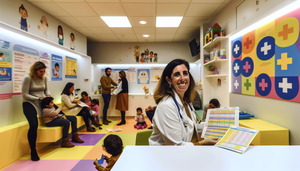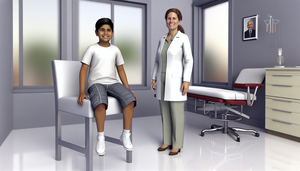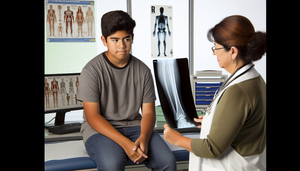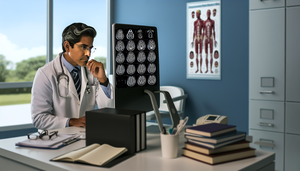
Laboratory Test Interpretation: Key Insights for Differential Diagnosis in Ambiguous Cases Using Biomarkers
Discover how to interpret laboratory tests in ambiguous cases for accurate differential diagnosis.
Read more
Imaging Modalities: Indications for Using CT, MRI, and PET in Diagnosis
Discover how to choose between CT, MRI, and PET to optimize medical diagnosis.
Read more
Safe Antibiotic Prescribing: Key Steps to Combat Bacterial Resistance and Ensure Rational Use
Discover how the safe prescription of antibiotics combats bacterial resistance through effective strategies.
Read more
Comprehensive Management of Chronic Conditions: Diabetes, Hypertension, and COPD in Clinical Practice
Discover how a multidisciplinary approach and digital technologies enhance the management of diabetes, hypertension, and COPD.
Read more
Updates on Global Clinical Guidelines: Hypertension and Asthma in Focus
Discover the latest updates in clinical guidelines for hypertension and asthma, optimizing treatment strategies.
Read more
Evidence-Based Approaches: Key Strategies for Efficient Patient Management in Medical Practice
Discover how to integrate scientific evidence, clinical experience, and patient preferences to optimize medical care.
Read more
Key Recommendations for Immunization: Updated Vaccination Schedule for Disease Prevention
Discover the latest updates in the vaccination schedule to optimize disease prevention.
Read more
Occupational Diseases: Early Signs, Medical Surveillance, and Workplace Prevention Strategies
Early detection and medical surveillance are crucial for preventing complications in occupational diseases.
Read more
Prevention Strategies: Managing Risk Factors and Promoting Healthy Habits for Lifestyle-Related Diseases
Discover how a balanced diet and regular physical activity can prevent chronic diseases.
Read more
Screening Guidelines in Preventive Medicine: Health Screenings for Every Age Group for Early Diagnosis
Discover how to tailor health screenings to enhance outcomes based on age and risk factors.
Read more
Leiomyosarcoma: Identifying Muscle Masses and the Importance of MRI for Early Detection
Magnetic resonance imaging is crucial for the early detection and effective treatment of leiomyosarcoma.
Read more
Ewing Sarcoma: Recognizing Fever and Bone Pain in Children for Rapid Diagnosis
Early detection of Ewing sarcoma improves prognosis by recognizing persistent fever and bone pain.
Read more
Chondrosarcoma: Persistent Pain and the Crucial Role of Guided Biopsy in Early Orthopedic Diagnosis
Guided biopsy is crucial for the early diagnosis of chondrosarcoma and improving prognosis.
Read more
Early Detection of Osteosarcoma in Young Patients: Importance of Bone X-ray and Biopsy for Bone Pain and Local Inflammation
Early detection of osteosarcoma in young patients improves prognosis through radiographic evaluation and biopsy.
Read more
Pituitary Cancer: Early Symptoms, Visual Disturbances, and Sellar MRI Detection
Early detection of pituitary cancer through sellar MRI enhances clinical prognosis.
Read more
Parathyroid Cancer: Early Warning Signs of Hypercalcemia and Confirmation Methods for Elevated PTH Levels
Severe hypercalcemia and elevated PTH levels are crucial for detecting parathyroid cancer.
Read more
Thyroid Cancer: Early Diagnosis of Thyroid Nodules through Cervical Ultrasound and Fine Needle Aspiration (FNA)
Early evaluation of thyroid nodules with ultrasound and fine-needle aspiration enhances the diagnosis of thyroid cancer.
Read more
Ependymoma: Recognizing Signs of Intracranial Hypertension and Effective Diagnostic Techniques Including MRI with Contrast and Tumor Biopsy
Discover how contrast-enhanced MRI and tumor biopsy are crucial in the diagnosis of ependymoma and its complications.
Read more
Early Detection of Medulloblastoma in Children: The Role of Brain Imaging in Diagnosing Ataxia and Morning Vomiting
Early detection of medulloblastoma in children enhances clinical outcomes through advanced brain imaging techniques.
Read more
Astrocytoma: Recognizing Focal Symptoms and the Importance of Contrast-Enhanced MRI in Primary Brain Tumors
Early detection of focal symptoms and the use of contrast-enhanced MRI improve the diagnosis of astrocytomas.
Read more